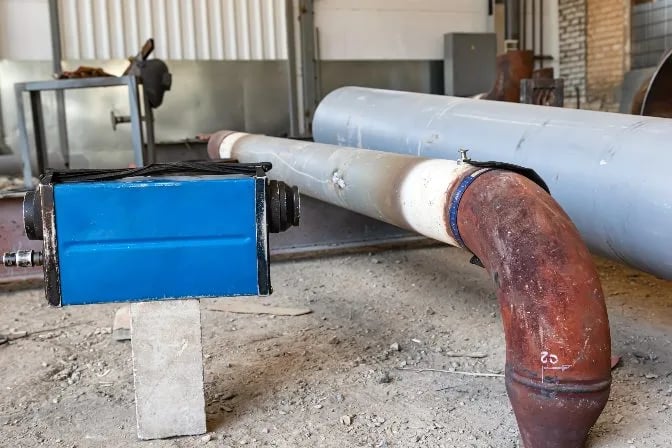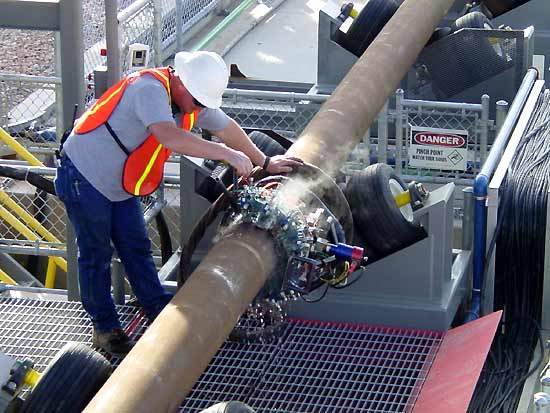Maximizing Efficiency: Pipe Welding Inspection Ideal Practices
By executing finest practices for pipeline welding assessment, companies can enhance processes, lessen mistakes, and improve task timelines. The precise interest to detail required in welding evaluation holds the key to the long-lasting longevity and dependability of the pipelines, making it a subject of utmost significance in the sector.

Significance of Reliable Welding Assessments
Effective welding assessments play a crucial role in guaranteeing the architectural honesty and safety and security of pipelines. Proper examinations are necessary to identify any type of defects, interruptions, or flaws in the bonded joints that might endanger the general honesty of the pipeline system. By conducting thorough evaluations, assessors can identify problems at an early stage, stopping potential leakages, ruptures, or failures that might have significant ecological and safety and security consequences.
Accurate and timely welding examinations likewise assist in keeping compliance with industry requirements and laws. Complying with these criteria is not just a legal demand yet additionally a required action to guarantee the reliability and longevity of the pipelines. Additionally, effective evaluations can contribute to cost financial savings by reducing the requirement for pricey fixings or substitutes due to welding problems that could have been avoided or corrected during the examination procedure.
Using Innovation for Assessments
To improve the effectiveness and precision of pipe welding evaluations, the assimilation of advanced innovations has actually become significantly essential in making sure precise and detailed analyses of welded joints. One of the crucial technical developments in pipe welding inspections is the usage of automated ultrasonic testing (AUT) systems. By accepting these technological remedies, pipeline welding inspections can be performed more efficiently, leading to higher high quality welds, improved overall safety and security, and lowered project timelines.
Establishing Clear Inspection Procedures
Establishing clear inspection procedures is vital for guaranteeing consistency and integrity in the pipeline welding assessment process. These procedures offer as a set of guidelines that outline the particular steps, requirements, and methods to be followed during evaluations. By clearly defining the inspection protocols, all inspectors included in the process can recognize their duties and roles, leading to an extra standardized and efficient examination process.

Regular evaluation and updates to the evaluation procedures are additionally crucial to adjust to transforming market standards and requirements. By continuously refining and enhancing the procedures based on responses and lessons found out, pipeline welding assessments can maintain the best quality requirements and governing conformity.
Training and Certifications for Inspectors

Educating and accreditations for examiners are vital in guaranteeing the proficiency and proficiency of individuals tasked with overseeing pipe welding processes - Pipeline Welding Inspection. Properly trained inspectors possess the required expertise and abilities to properly assess weld quality, adherence to welding treatments, and compliance with sector requirements and regulations
Certifications, such as those offered by the American Welding Culture (AWS) or the American Petroleum Institute (API), validate an assessor's expertise and capacity to execute examinations to the highest possible criteria. These accreditations often require rigorous training, examinations, and ongoing professional growth to make certain that examiners remain current with the current developments in welding innovation and inspection methods.
Along with formal certifications, constant training programs play a vital function in boosting examiners' capabilities. These programs cover a vast array of subjects, consisting of welding processes, defect detection, safety procedures, and appropriate codes and requirements (Pipeline Welding Inspection). By spending in comprehensive training and accreditations for assessors, firms can promote the integrity of their pipe welding tasks and minimize the risks related to low-grade welds
Constant Enhancement in Examination Procedures
Building upon the foundation of experienced and qualified assessors, continual renovation in assessment processes is essential for ensuring the ongoing high quality and conformity a fantastic read of pipeline welding procedures. By implementing a system of continual improvement, pipeline welding evaluation procedures can advance to satisfy the changing demands of the sector, technical innovations, and regulative requirements. This involves regularly evaluating and reviewing evaluation devices, treatments, and methods to identify areas for enhancement.
One secret facet of continuous enhancement in inspection processes is comments. Collecting input from inspectors, welders, designers, and various other stakeholders permits for a detailed evaluation of present techniques and the recognition of prospective areas for enhancement. Furthermore, leveraging analytics and information can give valuable insights into the performance of inspection processes, making it possible for informed decision-making for optimization.
Furthermore, purchasing training and growth programs for inspectors can make certain that they are equipped with the most recent knowledge and abilities to do their duties efficiently. Continuous enhancement is a vibrant process that needs commitment and commitment from all stakeholders to drive excellence in pipe welding evaluation methods.
Conclusion
In verdict, taking full advantage of efficiency in pipe welding evaluations is important for making certain the top quality and security of infrastructure projects. By making use of technology, developing Read Full Report clear methods, giving correct training and accreditations for assessors, and constantly enhancing assessment processes, organizations this website can simplify their operations and decrease risks. It is important for markets to prioritize reliable welding assessments to maintain high criteria and meet governing demands.
Reliable assessments can contribute to cost financial savings by decreasing the need for costly fixings or replacements due to welding defects that can have been avoided or fixed throughout the inspection procedure.
Establishing clear inspection protocols is important for making sure consistency and integrity in the pipeline welding evaluation procedure. By clearly specifying the inspection protocols, all assessors entailed in the procedure can recognize their functions and responsibilities, leading to a more efficient and standard examination operations.
Clear assessment protocols help in reducing the probability of errors or oversights during the examination procedure.Building upon the structure of skilled and licensed examiners, continuous renovation in inspection processes is vital for ensuring the recurring high quality and conformity of pipeline welding procedures.